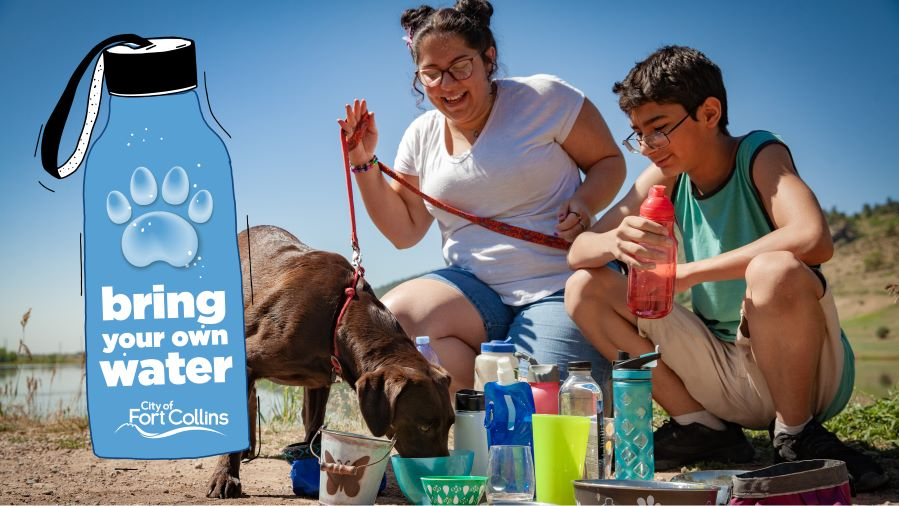Cyanotoxins & Blue Green Algae#

Harmful algae blooms are in local ponds and can be toxic.
It is easy to stay safe while recreating, just stay dry and bring your own clean water for yourself and your dog.
Play it Safe: Limit your exposure to potentially toxic blue green algae.
- Only swim and recreate in areas where water quality is monitored and managed.
- The City does not monitor water bodies in parks and natural areas for harmful algal blooms or cyanotoxins.
- Keep pets out of water and bring clean water for them to drink.
- Avoid boating so you can prevent contacting the water or accidentally drinking it.
- Never drink water from outdoor water bodies such as ponds, lakes, rivers, or streams.
- If you touch the water, use hand sanitizer, and wash your hands with soap when available.
Boaters: Play it Safe! Limit your exposure#
- Avoid boating so you can prevent contacting the water or accidentally drinking it.
- Only boat in areas where water quality is monitored and managed.
- The City does not monitor water bodies in parks and natural areas for algal blooms or cyanotoxins.
- Never drink water from outdoor water bodies such as ponds, lakes, rivers, or streams.
- If you touch the water, use hand sanitizer and wash your hands with soap afterwards.
Pet Guardians: Play It Safe! Limit Your Exposure#
Pet Guardians can limit your pets' exposure to potentially toxic blue green algae by keeping pets out of water and bringing clean water for them to drink.
Tips for Fishing & Anglers#
Anglers: Play it Safe: Limit your exposure to potentially toxic blue green algae by:
- Clean fish well and discard of guts properly (in trash containers)
- Never drink water from outdoor water bodies such as ponds, lakes, rivers, or streams.
- If you touch the water, use hand sanitizer and wash your hands with soap afterwards.
Frequently Asked Questions#
-
- Harmful algal blooms can be caused by a variety of algae and can occur in natural waterbodies. They occur under environmental conditions including: warm air and water temperatures; shallow and stagnant waters; and elevated nitrogen and phosphorus entering the water
- Blue green algae (BGA) naturally occur in waterbodies, including City-owned/managed ponds, lakes and reservoirs.
- The rapid growth of blue green algae under certain environmental conditions can lead to harmful algal blooms (HABs)
- Mid-summer through early fall is the most common time for HABs to occur
-
- Cyanotoxins are highly toxic to people and pets and can be produced by some strains of blue green algae
- The presence of blue green algae in a waterbody does not mean that cyanotoxins are present
-
Cyanotoxin exposure can occur through inhalation, ingestion or skin contact.
- Symptoms can include skin rashes, gastro-intestinal inflammation/diarrhea and liver damage
- If you suspect that you’ve been exposed to cyanotoxins, seek immediate medical attention.
- If you suspect that your pet has been exposed to cyanotoxins, seek immediate veterinary attention.
-
Harmful algae can:
- resemble thick pea soup
- look like spilled paint on the water’s surface
- create a thick mat of foam along the shoreline
- be generally green or blue-green in color, although it can be brown, purple or white
- be made up of small specks or blobs floating at or just below the water surface
- Visual indicators of algal blooms often include:
- Surface scum, foam, floating algae mats, off-colors and the presence of dead fish
- https://www.epa.gov/nutrientpollution/harmful-algal-blooms
Harmful algae are NOT:
- stringy, made up of long bright grass-green strands that feel either slimy or cottony
- mustard yellow in color (this is probably pollen)
Learn More
USGS’s website, https://toxics.usgs.gov/highlights/algal_toxins/algal_faq.html
EPA’s website https://www.epa.gov/cyanohabs.